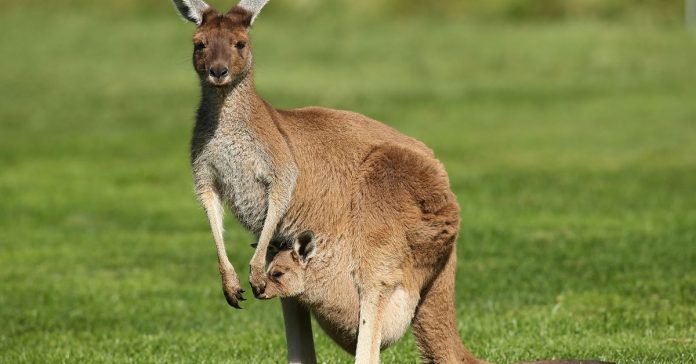Kangaroos have been assumed to produce less methane gas and to be less flatulent than other ruminants like cows due to different bacteria in the kangaroo foregut. The low methane production of kangaroos has never been completely investigated. Adam Munn from the University of Wollongong in Australia and Marcus Clauss from the University of Zurich in Switzerland are the first to prove that kangaroos are rather gassy after all.
The researchers measured everything a group of different kangaroos ate and expelled. The scientists also changed the diet of the kangaroos in an effort to determine what food produced the gassiest kangaroos. The study found that kangaroos are no less flatulent than other herbivores. Variation from a normal kangaroo diet to a diet high in alfalfa had no significant change in flatulence. Kangaroos that ate more produced less gas because the bacteria in the kangaroo’s gut took longer to process large amounts of food and produced less methane.
Methane produced by cattle has become an increasing concern in the age of climate change and global warming. Cows produce 70 billion gallons of gaseous methane each year. The investigation aimed at determining changes in diet and bacteria that could reduce the amount of methane that cows and other livestock produce.
The mystery of kangaroo flatus has lasted 45 years. The results indicate that kangaroos are no gassier or less gassy than other animals. Science has finally gotten to the bottom of the kangaroo gas conundrum. Possibly the kangaroos are relieved that they will not be “what’s for dinner” based on flatulence.















